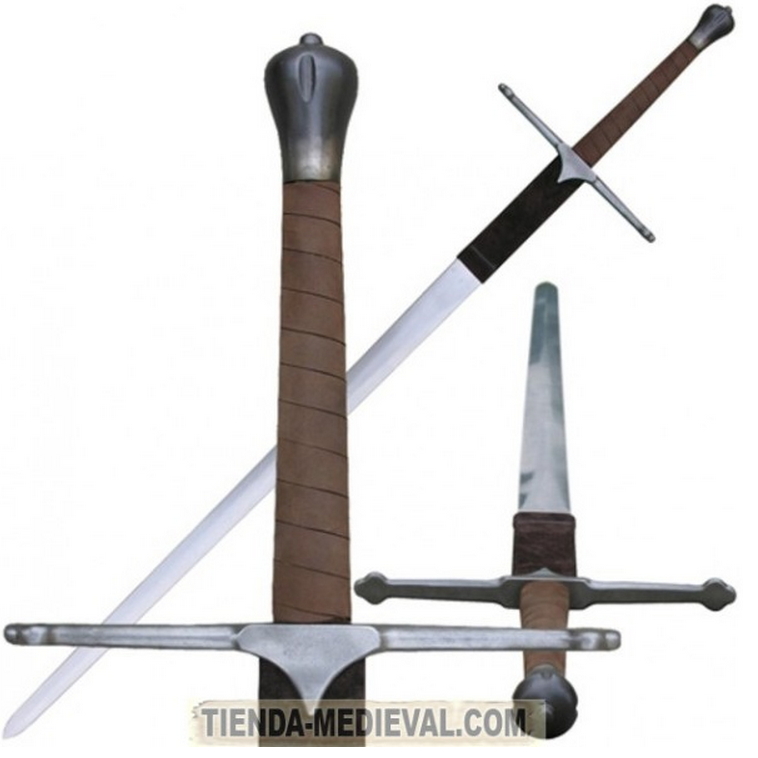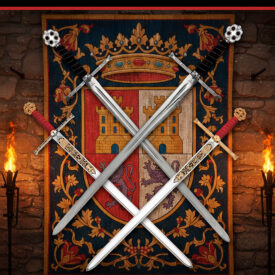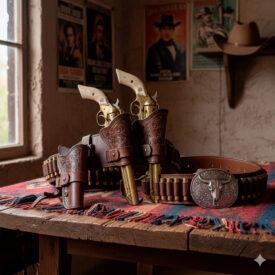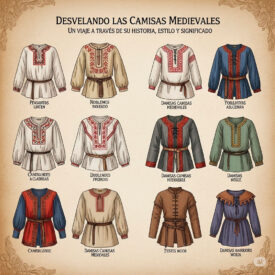The mandoble is one of the most imposing and fascinating swords of the Middle Ages and the Renaissance. What differentiates it from other great swords, how was it used in battle, and why does it continue to arouse interest today? In this article, we analyze its origin, design, handling techniques, and how to distinguish a mandoble from other long swords.
What is a mandoble and why was it important in the 15th–16th centuries?
The term mandoble refers to a large sword designed to be wielded with both hands. Its length usually ranges between 2 and 2.5 meters, and its weight can be up to 4 kg. It is not only its size that defines it, but its tactical function: breaking formations, punishing armor, and providing reach on European battlefields.
A weapon designed to break ranks
In the 15th and 16th centuries, mandobles were used to disarticulate the ranks of armored pikemen and create gaps for larger offensives, such as cavalry charges. The force of the blow, rather than penetration, often produced fractures, bruises, and severe contusions even without piercing the armor.
Design and key parts of the mandoble
Although there are variations, there are common features: a long and heavy blade, an extended hilt, long guards, and a round pommel. The hilt represented a significant portion of the total length — a fifth or a quarter — and was complemented by long quillons that offered protection and leverage for maneuvers.
Hilt, guards, and pommel
The long cross-guards (quillons) protected the hands and allowed for blocking or deflecting enemy weapons. The spherical or rounded pommel was not just decorative: it facilitated the rotation of the left hand, allowing fluid strikes and thrusts at greater reach. An important detail: the first third of the blade was usually unsharpened so that the right hand could rest on it or to facilitate two-handed grips.
Mandoble fencing techniques
The mandoble requires a specific technique. Its use combines two-handed cuts, long thrusts, and balancing movements aimed at creating power and control. These techniques are not intuitive for those familiar only with one-handed swords.
- Two-handed grip: both hands on the hilt for long, controlled blows.
- Mixed grip: one hand on the hilt and the other on the first third (unsharpened area) for close-range combat.
- False guard: spikes or reliefs near the start of the blade to prevent the hand from slipping and to improve control.
Mandoble vs. other long swords: montante, bastard, and greatsword
The terminology can be confusing: many hand-and-a-half swords have been called mandobles, montantes, greatswords, or bastard swords. However, the historical mandoble of the 15th century was a specific type of large sword, with clear tactical purposes.
Keys to differentiate
- Length: the standard mandoble was exceptionally long (2–2.5 m).
- Weight: heavier than a typical bastard sword (can reach 4 kg).
- Long hilt: designed for two hands with the possibility of a mixed grip.
How armors were impacted
The evolution of armor greatly influenced the design of the mandoble. Instead of always piercing the plate, the mandoble sought to produce impact damage: concussions, fractures, and displacement of the armor. A well-aimed blow could put a man out of action even without perforating the armor.
Size, handling, and ergonomics
Although they seem clumsy weapons, mandobles were designed with basic ergonomics in mind. The length of the hilt, the balance of the pommel, and the weight distribution allowed for surprising blows. The wielder’s skill made the difference between an ornamental piece and an effective weapon.
Use in hand and a half
Some variants allowed the sword to be carried as a hand-and-a-half: the primary hand on the hilt and the secondary on the first third. This provided versatility in confined spaces.
Comparative table: mandoble and long swords
Below is a quick comparison to identify practical differences.
| Type | Typical length | Approximate weight | Hilt | Main use |
|---|---|---|---|---|
| Mandoble (historical) | 2–2.5 m | 2.5–4 kg | Very long, two hands | Break formations, strike armor |
| Montante/Greatsword | 1.4–2 m | 1.5–3 kg | Long, but more manageable | Battle, duel, training |
| Bastard sword | 1.1–1.4 m | 1–1.8 kg | Designed for one or two-handed use | Versatile, mixed combat |
The mandoble in culture and collecting
Today, mandobles are not only of interest to historians and reenactors: collectors, filmmakers, and practitioners of historical European martial arts seek functional replicas. There are decorative, functional, and utilitarian versions that balance aesthetics and safety.

Where to buy mandobles and what to look for
If you are looking for a replica or a functional mandoble, pay attention to:
- Steel type: carbon steel for functionality, stainless steel for display.
- Forged or cast: forged usually offers better structural strength.
- Balance and grip: test the weight and center of gravity.
- Historical detail: if accuracy is important to you, compare with historical models and visual sources.
Usage recommendations
Always practice under supervision and with protective equipment. Functional mandobles require technique and space. For display, prioritize finishes and the assembly of the pommel and guard.
Common myths and errors
There are many misconceptions about the mandoble: that it is a useless weapon due to its weight, or that it only served for direct clashes. The reality is that its design and technique sought a balance between reach, power, and control in dense formations.
Common mistakes when evaluating a replica
- Not measuring the center of gravity.
- Underestimating the strength of the steel.
- Buying for aesthetics without checking the grip.
If you want to start studying the mandoble
Approach HEMA (Historical European Martial Arts) groups, look for instructors who teach longsword techniques, and practice with safe replicas. Progression should be gradual: first footwork and control, then controlled cuts, and finally combinations and charges.
In short: the mandoble is not just a large sword; it is a weapon with a precise military function, with a design conceived for warfare in formation. Knowing its history, technique, and characteristics helps you distinguish replicas and appreciate its historical importance.












